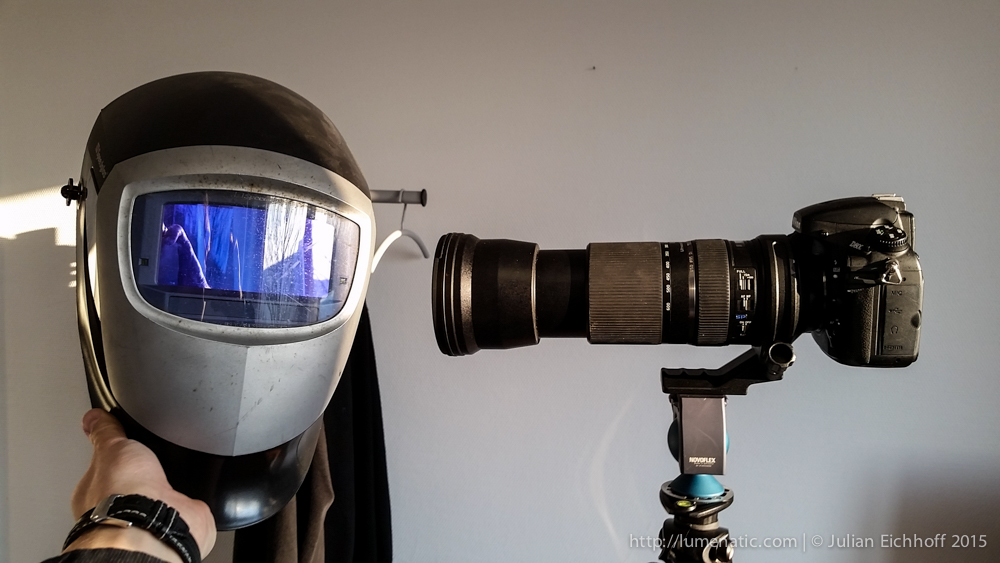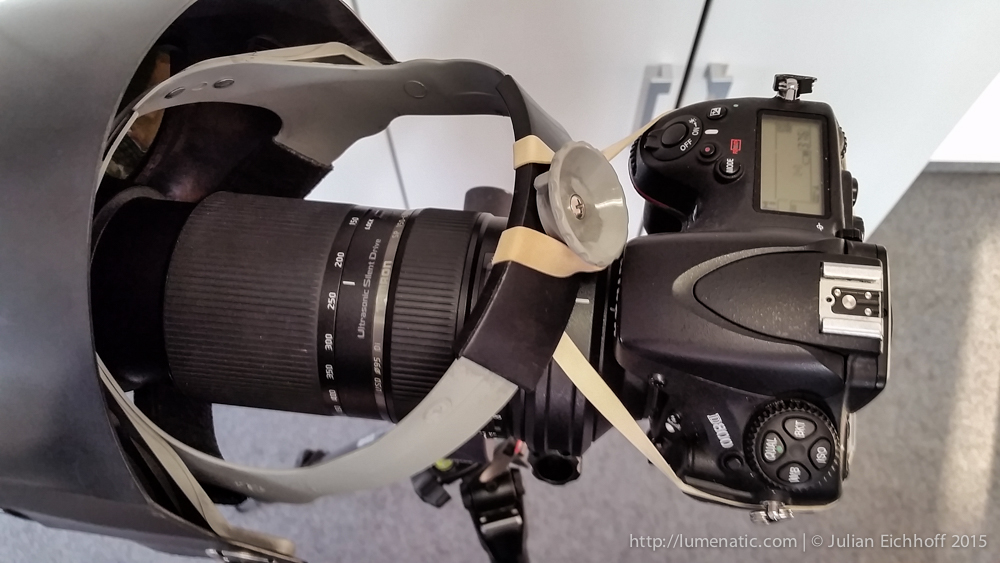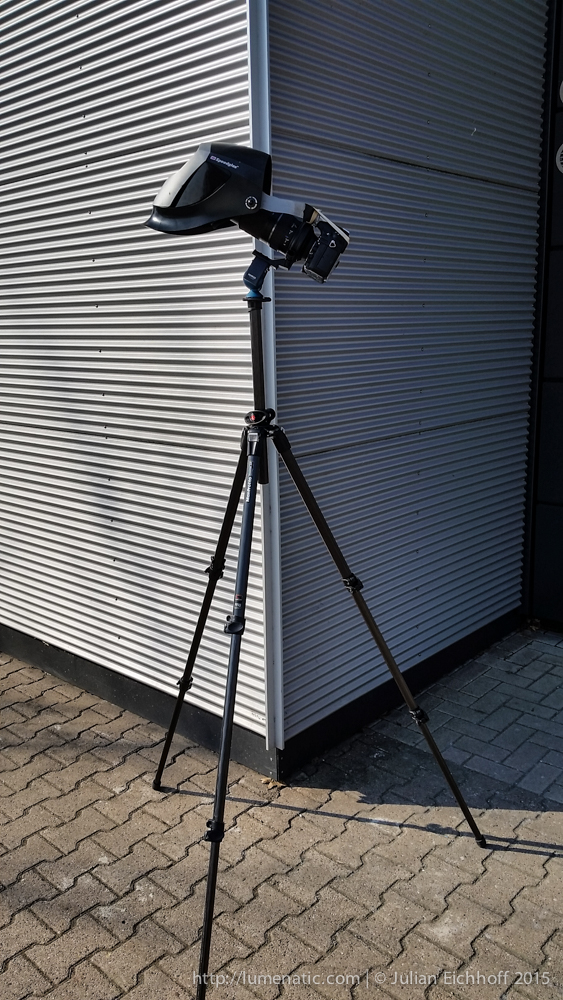 I am a little late with my report, but little late than never. During the solar eclipse on March 20th 2015 I took some photos of the event. The results are ok, although I could have done better in my opinion.
I am a little late with my report, but little late than never. During the solar eclipse on March 20th 2015 I took some photos of the event. The results are ok, although I could have done better in my opinion.
I have to admit that I did not prepare very well for the event. I missed buying one of those solar filter foils, which come at a price of 25-30 € for a 20×30 cm sheet. The day before the eclipse (ahem, yes, that’s late) I started looking for a solution and the only thing I could find in the nick of time was a welding mask, borrowed from the workshop at my workplace.
“Unfortunately” it turned out to be an active welding mask. These masks are electronically triggered, meaning the glass only becomes ultradark when a bright lightsource is present. I did not attempt to disassemble the system, so I strapped the complete mask in front of my lens. This worked much better than expected:
I mounted the Tamron 150-600 mm lens on my D800 and strapped the welding mask with a rubber band to the camera. The mask sat stable on the lens, only the rubber band prevented the lens from being locked at 600 mm – the tension pushed the lens back to approx. 460 mm. If I wanted to shoot at 600 mm I had to zoom manually and keep my hand on the zoom ring to prevent it from being pushed back.
That way I shot many images and also made a short timelapse-video.
Here is an unedited image (if you disregard the watermark…):

The sun is green, and no contour is visible. Well, what did I expect. The sun does not have craters like the moon.
Basically I photographed green pac-mans / smileys. On most images the sun is hardly recognizable as such. Through the smeared glass of the welding mask a sharp picture was next to impossible. As mentioned above it was an active mask with a screen which is triggered in bright light. The construction has several layers, meaning several layers of glass, meaning a loss of sharpness.
One detail I could capture though was a sunspot in the upper left corner:

Bottom line:
Due to bad preparation the results were not as good as they could have been. However I managed to take a timelapse video and show a sunspot. The main lesson I learn from this shoot is to prepare well (D’UH…) and use appropriate filter media (D’UH²).








Great work, congratulations!!!
Reblogged this on Modern Astronomy and commented:
I found this post to be clever and helpful. Have a look at how this photographer solved the problem of retina protection, glare and eye safety. Others might try this too! Cool!